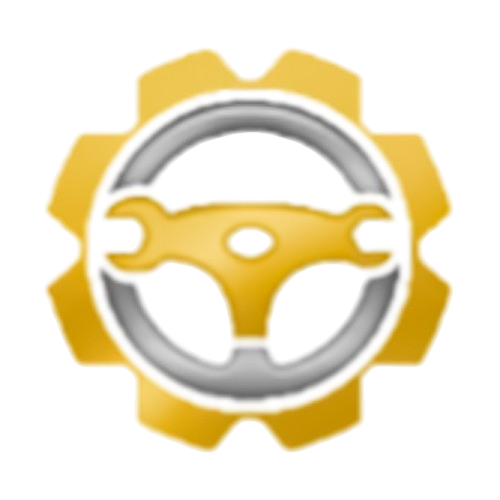Table of Contents
Buying junk car parts from a salvage yard is pretty cost-effective and the best way of getting car parts required for maintaining your vehicle.
However, not everyone is cautious when purchasing car parts from salvage yards, which can lead to significant risks. Whether you are an experienced DIY automobile mechanic or just starting, you must know about salvage yards and how to buy parts. You want to save money on car repairs and avoid the risks associated with vehicle parts.
In this blog, we will go over some best practices for sourcing used auto parts from junkyards. Where can I find reliable yards? How can I find my way around? What are the best ways to get quality components? How do I get a quote and have them shipped to me? Do these questions resonate with you? This will give you an idea of how to look for used vehicle components in your local area or travel to a car junkyard.
Understanding Salvage Yard Operations
Salvage yards are also known as car salvage yards or junkyards. These are the locations where out-of-service vehicles that have aged or suffered from mechanical issues or accidents are dismantled for parts. The automobiles may have collided, but many components in them remain usable, allowing those in need to obtain used car parts at considerable discounts.
Did you know: Salvage yards recycle about 350 million tons of car parts every year.
Ordinarily, salvage yards work in one of two ways:
Full-Service Salvage Yards: The salvage yard team locates and pulls the needed item. Although this option is significantly more expensive, it is a practical choice for individuals who are uncertain about their ability to draw parts independently.
Self-Service Salvage Yards: Often called “Pick and Pull” yards, you will need to locate your car, find your part, and pull it off yourself. They are less expensive because you provide the labor.
What types of vehicles do you typically find in a salvage yard?
Insurance companies and private individuals are among the many sources of salvaged cars.
They may have been written off by insurance, in an accident, or too expensive to repair. Many of these cars often retain many usable parts, including used car engines, transmissions, body panels, and much more.
Industry reports indicate the possibility of salvaging and reusing almost 75% of a car. We can recover significant equipment like transmissions, engines, lights, and mirrors.
Tips for navigating a salvage yard
If you have never been to a salvage yard before, it can be a little intimidating. However, with a little advance planning and forward thinking, you might make your visit a lot more efficient and effective. Here’s something to keep in mind:
1. Wear appropriate clothing.
Salvage yards are anything but clean. You will have to go through unclean, dusty areas and come into contact with numerous oily components. It is advisable to wear clothing that you are comfortable getting dirty. Closed-toe shoes or work boots are a must in case you encounter sharp objects or heavy machinery.
2. Bring your tools.
Self-service auto salvage yards require you to pull out the used car parts. For instance, you must bring at least a minimal toolkit that would consist of wrenches, screwdrivers, pliers, and socket sets. Depending on what you are looking for, the breaker bar or hammer and car jack are also required. Typically, salvage yards do not provide tools.
3. Know what you are after.
Before you leave, do your research. Be sure that you know what make, model, and year your car is, as well as what makes and models of vehicles are compatible with the parts you need. Since many used auto parts are available for multiple makes and models of vehicles, you will have a wider selection to choose from.
4. Determine the yard’s layout.
Once you find the salvage yard, ask for a map or ask where you can find specific kinds of autos. Many salvage yards index and categorize vehicles according to manufacturer type or by type of model, which may save you more time.
5. Get ready to be careful when lifting or removing the part.
When it’s time to pull the part off, take your time and be patient. Rushing often leads to errors; finding parts in a yard often teaches patience and accuracy. If you’re unsure, educate yourself on the mechanical attachment of the part to the vehicle.
Identifying high-quality parts in a yard
When purchasing used car parts from a salvage yard, your primary concern is whether the parts are still functional. Here is how you should ensure you buy reliable and quality parts:
1. Assess the condition.
Start by visually checking the part for signs of degradation, such as rust, cracks, or excessive wear. Disable all moving parts from functioning if possible, and inspect any electrical components. For example, before purchasing an alternator, you should crank the pulley with your hand and make sure it turns with ease.
2. Take a look at the donor vehicle’s mileage.
If the salvage yard reports mileage on their vehicles (most do), try to purchase parts from vehicles that have lower mileage. Parts from a vehicle with 50,000 miles are going to be in better condition than those from a vehicle with 150,000 miles.
3. Avoid using flood-damaged cars’ parts.
Be aware of flooded automobiles. Water will damage electric components and rust metal parts, making them unreliable. Where possible, take the car for inspection before purchasing parts.
4. Test electrical components.
If you are removing an electrical component like a starter motor, alternator, or power window motor, take a voltmeter with you to check for continuity or have the yard staff test it for you. This can save you from buying a non-working component.
Shopping with reputable companies such as Used Auto Parts Pro increases your chances of getting good-quality pieces. Used Auto Parts Pro provides a quality-checked piece, giving you more confidence in your purchase.
Negotiating Prices and Warranties
In a salvage yard, you can negotiate the selling price or warranty based on your knowledge. Here’s how to negotiate for the best deals:
1. Do Your Research
Before you step outside the yard, check online to see how much you can expect to pay for the parts.
2. Ask for a Discount
Don’t be afraid to haggle. Most junkyards are willing to negotiate, particularly if you purchase multiple parts or if the part requires rebuilding. Ask if they can lower the price or have a package deal.
3. Look for warranties.
Salvage yards may offer a warranty on their parts for some time, while others do not. Always ask if they have any type of return policy or even a limited warranty, especially on high-priced items such as engines or transmissions. For example, Used Auto Parts Pro often offers limited warranties on some items.
Ensuring Proper Removal and Transport
Once you identify the part, take it home cautiously. Here is how to do it correctly:
1. Remove that part carefully.
Be patient while removing that part. Take caution when removing complicated parts like engines or transmissions, and consider bringing a friend or renting the necessary equipment like a hoist.
2. Preserve the component.
After extracting the component, cover it or put it in a box or container to protect it as you take it away. Handle the electronic components carefully to prevent damage.
3. Carry a vehicle with sufficient space.
If you are re-harvesting a heavy part, such as a bumper or engine, make sure you have an adequate vehicle to transport it cautiously. For big parts, transporting is best via a truck or trailer.
Conclusion
You can go through automobile salvage yards collecting your used car parts without much hassle if you get familiar with the operations in such yards, know what to expect, and are able to negotiate some affordable prices and good warranties. You can thus procure superior quality parts at a significantly reduced cost compared to purchasing new ones. For your used car parts requirements, you should seek out reputable companies like Used Auto Parts Pro, among others, which may include junkyards in Washington.
Whether you’re an expert mechanic or an individual who needs to cut costs on car repairs, salvage yards provide a lot of ready-made economical solutions. Follow the advice in this book to make a profitable purchase!
FAQs
Prior to visiting a salvage yard, verify your vehicle’s make, model, and model year. Some applications may interchange between models and years, so it’s best to first check online or consult specialists such as Used Auto Parts Pro.
Again, this depends on the salvage yard’s policy. Car salvage yards sometimes offer return windows or limited guarantees for certain parts, particularly for critical items like engines and transmissions. Before buying from them, ensure that their policies are clarified.
Indeed, many parts in the salvage yards are in excellent condition, and the majority originate from low-mileage or slightly damaged autos. Before making quality purchases, you should thoroughly inspect them and source them from reputable sources like Used Auto Parts Pro.
You’ll need to supply your own tools at a self-service salvage yard. Many people develop a kinship with wrenches, screwdrivers, and socket sets. Salvage yards that offer full service, like the ones from Used Auto Parts Pro, will pull the parts off for you.
To find a decent salvage yard, check online reviews and recommendations, or browse sites such as Used Auto Parts Pro or Junkyard Washington. You can also use keywords like “car junkyard near me” or “used auto parts near me” to search for local companies with good reputations.





